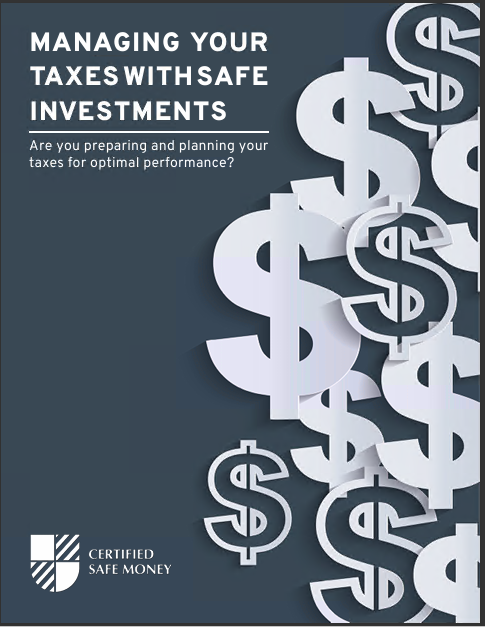Key Takeaways
-
Fixed index annuities offer retirees a balance between growth potential and protection against market downturns, making them a popular financial choice in 2025.
-
These annuities come with tax-deferred growth and options for lifetime income, addressing key retirement concerns such as income stability and market volatility.
What Are Fixed Index Annuities?
Fixed index annuities (FIAs) are financial products designed to provide growth potential linked to a market index, like the S&P 500, while also protecting your principal from market losses. They’re insurance contracts, not investments, which means they focus on offering stability and predictability, two things many retirees prioritize.
Here’s how they work: You pay a lump sum or a series of premiums to an insurance company. In return, they offer a combination of guaranteed minimum interest and potential gains tied to the performance of an index. However, unlike direct investments in the stock market, you won’t experience losses when the market dips.
Why Are Retirees Flocking to Fixed Index Annuities?
Protection Meets Growth Potential
One of the standout features of FIAs is their ability to balance safety with growth. Unlike variable annuities, FIAs protect your principal, so you won’t lose money even if the market experiences a downturn. This safety net is crucial for retirees who don’t have the time to recover from significant market losses.
Tax-Deferred Growth
With an FIA, any interest or earnings grow tax-deferred. This means you don’t pay taxes on your gains until you start withdrawing money. For retirees looking to maximize their savings, this can be a significant advantage.
Lifetime Income Options
Many FIAs offer lifetime income riders, ensuring you never run out of money, no matter how long you live. This feature addresses one of retirees’ biggest fears: outliving their savings. By turning a portion of your savings into a steady income stream, FIAs provide peace of mind.
How Do Fixed Index Annuities Work?
The Basics of Index Linking
Your potential gains are tied to the performance of a specific market index, such as the S&P 500 or the Dow Jones Industrial Average. However, you’re not directly invested in these indexes. Instead, the insurance company calculates your return based on how the index performs, subject to certain limitations.
Caps and Participation Rates
When it comes to earning interest, FIAs use caps and participation rates. A cap is the maximum percentage you can earn in a given year, while the participation rate determines what percentage of the index’s gains you’ll receive. For example, if the index grows by 10%, and your participation rate is 80%, you’ll earn 8%.
Guaranteed Minimums
Even in years when the market performs poorly, your FIA will still grow by a guaranteed minimum rate, often 0% or slightly higher. This ensures your principal remains intact.
Common Myths About Fixed Index Annuities
“They’re Too Complex”
While FIAs may seem complicated at first, their core features—growth potential, principal protection, and lifetime income—are straightforward once you understand the basics.
“There’s No Flexibility”
Modern FIAs offer a range of options, from flexible withdrawal terms to various income riders that cater to diverse financial goals. You can customize your annuity to meet your specific retirement needs.
“They’re Too Expensive”
While FIAs do come with fees, such as rider costs, these fees often provide valuable benefits like guaranteed income. It’s essential to weigh the costs against the advantages you receive.
Benefits of Fixed Index Annuities
Steady Income Stream
FIAs are a reliable way to turn a portion of your retirement savings into consistent income. This feature is particularly useful for retirees who want to cover essential expenses without worrying about market volatility.
Protection Against Market Losses
Your principal is safeguarded, making FIAs an excellent choice for conservative investors or those nearing or in retirement.
Estate Planning Benefits
Many FIAs offer death benefits, allowing you to leave any remaining funds to your beneficiaries, often without going through probate.
Drawbacks to Keep in Mind
Limited Liquidity
Most FIAs come with a surrender period, during which withdrawing more than a specified amount incurs penalties. Surrender periods can range from 5 to 10 years or longer.
Caps and Fees
The growth potential of FIAs is limited by caps, participation rates, and any fees for additional features. This means your returns may be lower compared to direct market investments.
Complex Terms
The various options and terms associated with FIAs can be overwhelming, especially if you’re new to annuities. It’s crucial to understand these terms or consult a financial advisor.
Is a Fixed Index Annuity Right for You?
FIAs aren’t one-size-fits-all solutions. They’re best suited for individuals who:
-
Want to protect their principal while enjoying some market-based growth.
-
Seek a steady income stream in retirement.
-
Are comfortable with limited liquidity in exchange for stability and income guarantees.
On the other hand, if you’re looking for unlimited growth potential or immediate access to all your funds, an FIA might not align with your goals.
How to Choose the Right FIA
Assess Your Financial Goals
Determine what you’re looking for: growth, income, or a combination of both. Your goals will guide your choice of annuity features.
Understand the Fine Print
Review the annuity’s terms, including caps, participation rates, fees, and surrender periods. Knowing these details helps you make an informed decision.
Work With a Trusted Advisor
Consulting a financial advisor can simplify the process and ensure the annuity you choose aligns with your overall retirement plan.
What’s New in 2025?
The popularity of FIAs continues to grow in 2025, with insurance companies introducing innovative features to attract retirees. Enhanced income riders, shorter surrender periods, and higher caps are among the latest trends, making these products even more appealing.
Maximizing Your Fixed Index Annuity
Combine FIAs With Other Retirement Accounts
Using an FIA alongside other accounts, such as IRAs or 401(k)s, can provide a balanced approach to retirement planning. While your FIA offers stability, other investments can provide additional growth.
Plan for Tax Implications
Remember that withdrawals from an FIA are taxed as ordinary income. Proper planning can help minimize your tax liability.
Monitor Your Annuity’s Performance
Stay informed about how your annuity is performing relative to the market index. Regular reviews ensure your FIA continues to meet your financial goals.
Why Fixed Index Annuities Are Here to Stay
In today’s uncertain financial climate, the demand for products that offer both safety and growth potential is higher than ever. FIAs provide retirees with the perfect blend of protection and opportunity, addressing common concerns like market volatility and longevity risk. While they’re not without drawbacks, their unique features make them a cornerstone of modern retirement planning.










